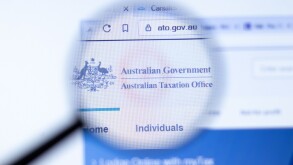The healthcare & life sciences industry in China is experiencing significant growth. It has transformed itself from a loose group of inward-looking domestic companies into an aggressive player with a global impact. The Ministry of Health believes it will generate healthcare opportunities worth more than $500 billion by year 2014 to 2015. Along with the rest of the economy, China's healthcare & life sciences market has grown dramatically, now accounting for 5.6% of the global market.
Policies enabling the healthcare & life sciences boom
The primary force driving healthcare & life sciences is the government's determination to provide quality healthcare for all citizens, which led to the sweeping healthcare reform of 2009. The 12th Five-Year Plan is another important booster, triggering increased opportunities and investment for all healthcare & life science players. Other reasons, including demand generated by robust economic growth and a rising middle class, the pressure brought about by urbanisation and changing lifestyles, as well as an ageing population and an increasing awareness of the need for quality healthcare, are also key drivers of the industry boom.
Implementation Plan of deepening the healthcare reform during the 12th Five-Year Plan (2012-2015)
The goal of the healthcare reform is to provide safe, effective and affordable healthcare services to all urban and rural residents by 2020. The main objectives of this implementation plan include:
Accelerating the development of comprehensive medical insurance coverage for the entire population: an additional 3% of the population (compared with the coverage in 2010), is covered by one of the three main medical insurance programmes, which handle urban employees, urban non-working residents and rural populations. Medical subsidies to the covered urban non-working residents and rural populations are to rise to RMB360 ($59) or above a head by 2015. The broader coverage will enable vast number of people to afford drugs and is opening up the grassroots market.
Improving the essential drug system: the Essential Drug List (EDL), first introduced in 2009, has grown from an initial list of 300-plus generic drugs to 520 kinds of drugs. The prices of drugs listed on the EDL are under control and the National Development and Reform Commissions (NDRC) will issue the ceiling price of the drugs later. The effect of the EDL and price control on pharmaceutical companies is profound and may force companies to operate on wafer-thin margins.
Improving a new grassroots medical institution management mechanism: by 2015, at least 95% of grassroots hospitals and clinics are expected to provide quality medical services. It is expected that the grassroots market will become an intensely competitive area and penetration into this market will lead to more opportunities.
Strengthening the public hospital reform: this includes gradually abolishing drug price additions as one income channel of public hospitals, strengthening the supervision of the increase of medical expenditures and setting up a modernised hospital management system. The public hospital reform will focus on the county-level public hospitals and commence a pilot programme in city-level hospitals.
Pushing forward with healthcare reform in the related areas: the government programmes cover equalisation of public medical services, optimisation of the medical resources, development of the medical talent pool, deepening the reform in pharmaceutical supply chains as well as the healthcare supervision system.
Robust opportunities attract more attention
Healthcare is a politically and socially-charged topic in China, and the government has demonstrated its determination to make significant changes to the situation and bring visible and practical benefits to the entire population. To ensure the implementation of healthcare reform and achieve the above set of objectives gradually, the government has been experimenting with different policy instruments to focus on the operation of the pharmaceutical companies, domestic and multinational, which are the important players in this market, to understand the value chain in the pharmaceutical industry to achieve the objective of lowering healthcare costs for the people.
Transfer pricing target and relevant competing interests
Unlike general industrial manufacturing, the pharmaceutical industry has a rather different value chain. For example, the R&D cycle alone can be more than 10 years. The significant spending during this period cannot bring immediate sales and/or profits to the company, but on the other hand, substantial failure in these efforts can result in a negative impact on the company's financial position. On the manufacturing side, there are a variety of observed arrangements for manufacturing entities. Some manufacturing entities may own patented product formulae, and manufacture, market and sell drugs into the market.
At another extreme, some manufacturers do not own any product formulae and instead import the active pharmaceutical ingredients (API) (which consist of product formula) and perform simple processing locally. On the surface, the related-party transactions may appear to be similar, for example, if certain raw materials are purchased from related parties and all products are sold to third parties, and activities may also appear similar, that is, conducting manufacturing operations. However, because of the difference in the functions, risks and assets profile – for example, carrying out risky R&D and owning patents in one case, and not the other – from a transfer pricing perspective, the expectations of profitability for these entities is very different.
Chinese tax officials have noticed these complexities, and in turn, have paid substantial attention to them. In 2009, the State Administration of Taxation (SAT) issued two circulars relevant to the pharmaceutical industry from a transfer pricing perspective. One identified 15 industries to be targeted, including the pharmaceutical industry. The other set out various measures to strengthen tax collection and administration, and identified pharmaceutical companies as major transfer pricing audit targets, with an emphasis on the valuation of intangible property. The attention on pharmaceutical companies has been lasting.
In late 2012, and as discussed more fully in the chapter focusing on transfer pricing generally, the SAT published the China Country Practices article in the UN's Practical Transfer Pricing Manual for Developing Countries, asserting again its understanding of location specific advantages (LSAs), which are advantages arising from assets, resource endowments, government industry policies and incentives that exist in specific localities. The SAT asserted that companies operating in China are entitled to additional profits arising from LSAs in China in many cases, and also discussed a variety of ways in which it takes them into account in transfer pricing investigations and analyses. The implication for pharmaceutical companies operating in China (where it is highly regulated and is a vast and growing market, and a number of other potential sources for LSAs), is that Chinese tax authorities may expect a high level of profits to be earned, and taxed, in China. This expectation of profitability, however, touches on a variety of issues.
Companies importing drugs or API from overseas related parties, similar to other companies importing tangible goods from related parties, are subject to scrutiny from the Chinese Customs Office. If they earn high levels of profit in China, then the office may suspect that the related-party import price is inappropriately low, triggering underpayment of customs duties. This is particularly relevant to pharmaceutical companies importing drugs or API, especially if there are patents in effect. Companies face challenges compounded by the fact that the tax authorities and the customs office are two distinct organisations: rulings and assessments issued by one authority have no binding effect on the other.
Potentially more important from a business perspective, high profits earned by pharmaceutical companies in China might attract price push-down by the NDRC, which regulates the prices of many drugs (please refer to the ensuing section for a more detailed discussion on the NDRC's actions.) In the worst case scenario, (excessively) high profits may be deemed to have violated NDRC regulations. The NDRC has various regulations to monitor and control certain drug prices with the goal to ease patients' financial burdens. In essence, the NDRC regulations impose maximum mark-ups at the wholesale and retail levels. The regulations also obligate pharmaceutical companies to report the drugs' specific information periodically to the NDRC. This includes, for example, the import price (if the drugs are imported), the ex-factory price (if the drugs are manufactured locally) and selling expenses. The result is that the NDRC can effectively monitor drug prices and require pharmaceutical companies to make a price reduction where appropriate. The result, however, is an expected shrinkage of supply chain profits, which may run counter to the expectations of the tax authorities regarding corporate profit levels.
Various authorities in China are keeping a close eye on pharmaceutical companies. Each authority's focus comes from different perspectives, and in some is contradictory and opposing in others. There is no single solution which will resolve all of these issues for all taxpayers. As a result, companies operating in the pharmaceutical industry have to establish a sound, technical approach to their transfer pricing, without compromising the flexibility for doing business, to manage the associated risks arising from each of these areas.
NDRC's investigation into pharmaceutical pricing
China's NDRC has issued a roadmap for medical and pharmaceutical pricing reforms, covering off-patent drugs, generics and medical devices, which propose allowing market-determined pricing where appropriate.
In early July 2013, the NDRC announced that to have a better understanding of costs, prices and other related information about pharmaceutical companies with an objective to set and adjust drug prices accordingly, it would launch a wide-ranging probe into the costs of drugs. Instead of reducing drug prices immediately, this probe aims to pave the way for drug price reform in the future.
The probe has two parts:
An investigation on 33 domestic drug makers and international drug distributors in relation to their ex-factory (import) prices for drugs sold at government-set prices as well as financial and operation information of manufacturers in the year of 2012
A special cost investigation on 27 international and domestic pharmaceutical companies with respect to production cost, distribution expenses and prices of drugs over the past three years from 2010 to 2012.
Unlike previous rounds of drug price investigation, which required pharmaceutical companies to self-declare their ex-factory prices, the latest probe is much more thorough. The NDRC assigned specific teams to conduct the on-the-spot investigation at the target companies from July to October 2013. The investigation covered not only the purchase price of ingredients and the ex-factory price of the drugs, but also the financial system, financial statements as well as related accounting vouchers, bills and contracts of the companies concerned. The NDRC expected to uncover a more accurate cost structure through this detailed review of the financial related documents of the target pharmaceutical companies, facilitating it to develop effective action plans and arrange the subsequent implementation of drug pricing reform.
In fact, the NDRC's further announcement in August 2013 provided certain proof about the intention of the latest probe. To make market-determined pricing mechanism workable, the NDRC plans to advance the drug pricing reform from these four perspectives:
exploring a new price management model focused on the instructed payment price;
improving pricing procedures with the introduction of pricing methodology based on pharmaceutical economic evaluation and international drug price comparisons;
creating a pricing policy that encourages innovation including the patent drugs, confidential ingredients, and drugs with state-award or sound quality; and
improving the management model of low-priced drugs, and encouraging the manufacturing scale by pricing leverage.
Trend towards growing collaboration
Fuelled by the government's ambitious healthcare targets and policy backing, domestic and multinational pharmaceutical companies are positioning themselves enthusiastically as vital links in this industry. However, China's complicated pricing mechanism will continue to dictate future plans for all pharmaceutical companies. As mentioned above, the healthcare regime is likely to implement price controls for the next five years, at a minimum, in an effort to contain expenditure. Pharmaceutical companies thus have little option but to work around this complex landscape.
From a business perspective, the impact of price control is severe. Prices of mature products are under intense pressure and experience frequent reductions, even as manufacturing and marketing costs as well as other expenses are growing. Consequently, two major approaches have been adopted by the pharmaceutical companies to maintain a reasonable level of business profits.
One is economies of scale, either by horizontal or vertical consolidation, and the other approach is to localise manufacturing. If you take the period of 2011-2012 as an example, 132 deals took place in China's pharmaceutical sector, with a total disclosed transaction size of $5.2 billion for 94 deals. This indicates that the consolidation-collaboration trend is becoming entrenched in the healthcare & life sciences market, with both foreign and Chinese companies becoming unusually active. Big multinationals as well as leading domestic players are adopting either M&A or joint venture arrangements as a short-cut to rapid development.
The government welcomes this collaborative approach to accelerate the development of the healthcare & life sciences industry, which concurrently facilitates the implementation of the healthcare reform. For this purpose, qualified M&A transactions could enjoy tax deferral treatment in relation to the capital gains generated from such corporate reorganisation arrangements. Various authorities could also grant financial subsidies and other monetary incentives to attract large pharmaceutical groups to establish holding companies and regional headquarters in China.
As an alternative, many companies are now contemplating the development of new products, which are not subject to price controls. Innovative drugs and first generics can enjoy exclusive pricing rights, guaranteeing relatively high profit margins for the population and sales of the new products. This approach is essentially in line with the government's support of innovation and R&D activities in the healthcare & life sciences industry.
As pharmaceuticals is one of the industries listed in the High and New Technology Areas with Key Support by the State and Guidance for Development of Prioritised Key Areas of High Technology Industries, the government has outlined the these key tax incentive policies applicable to R&D activities, with an objective of encouraging companies in China's healthcare & life sciences industry to carry out R&D activities continuously and improve their R&D capabilities:
Preferential corporate income tax (CIT) rate of 15% for recognised high and new technology enterprises;
Preferential CIT rate of 15% for recognised advanced technology service enterprises;
Bonus deduction of R&D expenses incurred for the development of new technologies, products and technological processes;
Value added tax (VAT) exemption for revenue from technology transfers, development and related consultation and service provisions; and
VAT exemption for revenue from qualified offshore outsourced service, e.g., knowledge processing outsourcing.
There are certain conditions to be satisfied to avail of the respective tax treatments. To enjoy some of the above favourable tax treatments, multinational pharmaceutical companies may consider reviewing or revising their business model for the production, distribution and sale of drugs in China. For example, they can consider arranging R&D centres or divisions set up in China to lead certain projects for part of their non-core business within the group and allow these centres or divisions to have ownership over the intellectual property resulting from the activities to satisfy the requirements for the relevant tax incentives.
Recent pharmaceutical investigation and tax risk management
The pharmaceutical industry in China is undergoing changes and such a fast-growing market is characterised as one of vast opportunities with extensive competition. It is inevitable in the business world that where there is high return, there is high risk, especially in an environment where the development of a mature regulatory and monitoring system is still on the way.
A recent high profile investigation into a leading pharmaceutical company in China, which resulted in arrests or detention of several senior executives, has now escalated into a more prolonged industry-wide investigation, amid concerns that illicit payments and other inducements are being made routinely to public health officials or other medical practitioners.
It is not a single or incidental event in pharmaceutical industry. It signals the government's recognition that supply chains and pricing in this industry need to become more transparent. Good corporate governance and developing guidance for sound tax risk management is crucial, particularly where the companies are subject to high levels of regulation, make high-margin consumer products or rely upon agency-distributor models to drive sales.
Since 2009, the SAT has been encouraging enterprises to establish effective tax risk control systems. An effective tax risk control system will help businesses detect tax risks at the embryonic stage and address these risks before they materialise into major tax non-compliance, which could lead to penalties for the taxpayers and bring a negative impact on the taxpayers' reputation. For instance, an effective tax invoice management system is fundamental to tax collection and administration in China.
The SAT considers tax risk management as an increasingly important area of tax supervision and consequently senior management of a company has a personal stake in the implementation of an effective system to ensure that tax risks are adequately controlled and that tax considerations are factored properly into the corporate decision-making process for major transactions and business strategies.
Due to rapid economic growth and limited government resources, the SAT started to focus on the tax administration of large-scale enterprises in recent years. Therefore, within China, there is a reason to believe that any domestic regulatory actions may lead to a higher probability of audit from the tax authorities. Demonstrating good tax governance, supported by a sound tax risk management framework, can be another important element in any response to the tax authorities. For example, as a result of the recent investigation of the pharmaceutical companies, you can expect the tax authorities to consider conducting a special audit on pharmaceutical companies to obtain access to their tax compliance status.
While the situation is evolving fast, we believe there are six areas that senior management needs to consider urgently:
Review third parties and intermediaries. Any companies that are reliant upon distributors and other agency models need to establish and maintain up-to-date information about third parties as a matter of utmost urgency. Clear policies are now needed to eliminate the risk associated with a company's entire ecosystem of business partners.
Consider compliance procedures in the local context. One important consideration for any multinational operating in China is whether their global compliance policies are proportionate and appropriate in a local context.
Ensure compliance activities are well documented. Having information clearly documented can remove uncertainty and delay from the process, and give a business more visibility about where it stands as well. In practice, this can require changes to deep-seated behaviours that need to be tackled through training and awareness programmes.
Consider the capacity of the finance function and IT infrastructure. Over the past decade, many in-house accounting and tax functions in China have not expanded or matured at the same pace as the rest of the business, meaning they are poorly placed to respond to an evolving and complex situation such as that now facing the pharmaceutical industry. The invoice (fapiao) system or receipt issuance in China is particularly prone to abuse in the absence of strong checks and balances by internal audit and finance functions. Similarly, executives should consider whether their IT systems can enable them to capture and aggregate the data that may be needed for an investigation or whether they have the tools to effectively detect and remediate anomalous patterns of behaviour.
Consider the implementation of an effective tax risk management system. Tax risk management should be considered as part of the overall risk management of the company. The relevant tax risk controls and documentation requirements should also be integrated into the enterprise-wide internal control program of the company. By implementing effective tax risk management, the company is poised to realise various benefits, including but not limited to reducing tax exposure and related financial costs; lowering tax audit risks and compliance costs; increasing certainty in preparing financial statements; and avoiding the surprise element which affects business' reputation.
Looking ahead
The latest investigations into the pharmaceutical industry should cause other companies to reconsider the balance of opportunities and risks associated with operating in China.
These are serious concerns that will have global implications for many multinationals. In many cases, they need to be addressed through changes to working culture that can only be effected with carefully chosen improvements to internal controls, remuneration and incentive policies, and other systems.
Obviously China will become one of the largest healthcare consumption markets in the world as the huge demand potential of its 1.3 billion-plus population is released over the next 10 to 20 years. Satisfying the substantial demand is not only a major task for the government, but a mission and an opportunity for the players in the healthcare & life sciences industry. The market calls for the emergence of strong players that can ensure that quality healthcare services can be delivered to China's massive population, but also needs those players with good corporate governance and sound tax risk management to set an example to their peers and ensure the healthy development of this industry as well as make a sustainable economic and social contribution to the country.
Biography |
||

|
|
Grace XieTax Partner KPMG China 50th Floor, Plaza 66 1266 Nanjing West Road Shanghai 200040, China Tel: +86 21 2212 3422 Fax: +86 21 6288 1889 Email: grace.xie@kpmg.com Grace Xie started her career as a professional accountant in 1993 in Sydney, Australia. She joined KPMG Hong Kong in 1998 to specialise in Chinese tax, and moved to KPMG Shanghai in 2001. In her career as a tax consultant, she has advised multinational clients across a wide variety of industries, including the manufacturing, trading and service sectors. She advises clients on corporate and personal taxation, and business matters relating to the establishment of business entities in the PRC, the structuring of remuneration packages and ongoing operations. Grace also has extensive experience advising multinationals on restructuring and M&A activities in China. Grace has assisted many foreign investors regarding their China transactions, tax due diligence and tax structuring. She has in-depth knowledge of the key tax risks and exposures for manufacturing companies in China. |
Biography |
||

|
|
Henry NgaiTax Partner KPMG China 50th Floor, Plaza 66 1266 Nanjing West Road Shanghai 200040, China Tel: +86 21 2212 3411 Fax: +86 21 6288 1889 Email: henry.ngai@kpmg.com Henry Ngai started his career with KPMG PRC tax practice in Hong Kong in 2002 and moved to KPMG Shanghai in 2007. Henry has extensive experience in advising multinational clients in different sectors, including pharmaceutical, chemical, real estate, industrial and consumer markets. He advises clients on business matters associated with existing and proposed investments in China from the tax, foreign exchange, customs and regulatory perspectives, such as holding structures, ongoing operations and fund repatriation strategies. Henry also provided assistance to many foreign investors for their acquisition projects in China regarding tax due diligence and tax structuring advisory. With more than 11 years' China tax experience, Henry has assisted many multinational companies to set up their establishment in China. He also has in-depth experience in facilitating his clients to improve tax risk management system and develop appropriate exit strategies for their investment in China. |
Biography |
||

|
|
Ho-Yin LeungTax Partner KPMG China 50th Floor, Plaza 66 1266 Nanjing West RoadShanghai 200040, China Tel: +86 21 2212 3358 Fax: +86 21 6288 1889 Email: hoyin.leung@kpmg.com Ho-Yin Leung is a partner in KPMG's global transfer pricing services (GTPS) group in Shanghai. Before joining KPMG, he worked for another big-four accounting firm where he provided transfer pricing, tax advisory, dispute and compliance services. In addition, Ho-Yin has extensive experience in advising corporations in tax-related business restructuring and reorganisation, and in allocating headquarters' costs. Ho-Yin has experience in providing transfer pricing services to multinational clients in various industries such as diversified industrial manufacturing, semiconductors and electronics, automotive, pharmaceuticals, healthcare, consumer goods, food and beverages, chemical companies, oil and gas, and alternative energy. Ho-Yin has also provided tax and transfer pricing advisory services to multinational clients in various tax efficient supply chain management and tax restructuring projects, including business transformation for supply chain structures and operation models as well as change management. In addition, he has experience in helping clients conclude bilateral advance pricing arrangement applications and he is working on several advance pricing arrangements for clients. Ho-Yin has frequently published articles in leading tax and transfer pricing publications around the world, including articles in the IBFD International Transfer Pricing Journal, BNA Forum, International Tax Review, the Asia Pacific Journal of Taxation and the HKICPA's [Hong Kong Institute of Certified Public Accountants] monthly journal. |









